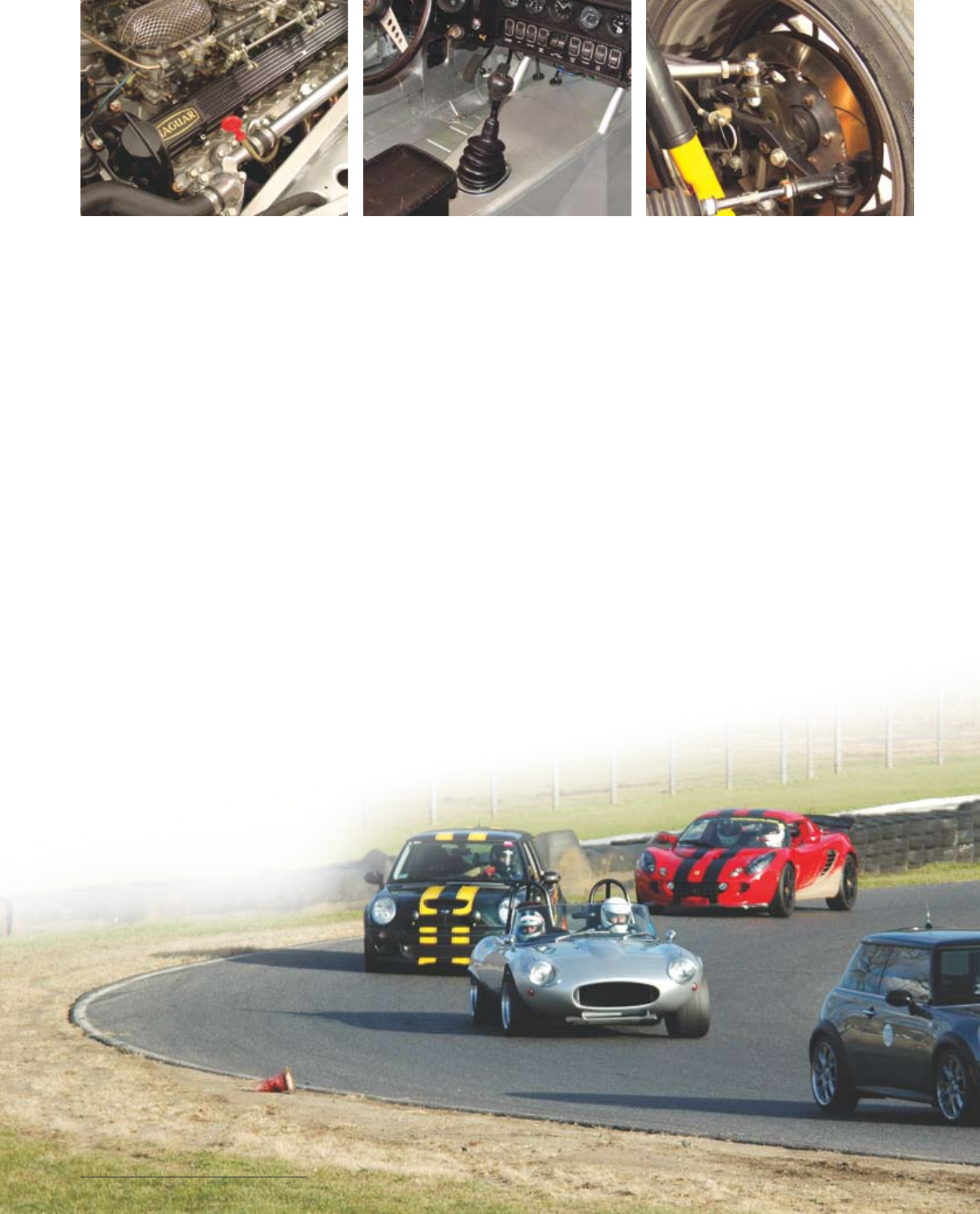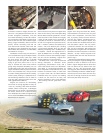
HEMMINGS SPORTS & EXOTIC CAR
•
october 2007 hemmings.com
26
ENGINE
As fitted to a Series III E-Type, the stock 5.3-
liter V-12 is only 86 pounds heavier than its
4.2-liter straight-six predecessor, and uses
four Zenith-Stromberg 175 CD 2SE carbure
-
tors. The engine in The Beast is a highly modi
-
fied 7.3-liter unit that uses an 84mm Jaguar
Racing forged crankshaft, 96mm Cosworth
pistons, Carrillo connecting rods and 1.8-
inch inlet/1.4-inch exhaust valves with .501
lift. With an 11.6:1 compression ratio and six
44mm Weber IDF carburetors, it makes 600hp
and 578-lbs.ft. of torque.
“The Beast is over the top, but there are a
lot of cost-effective ways to modify the Series
III V-12 for more power,” Stew says. “With
the short stroke, the 5.3-liter is a durable
engine that goes and goes. But instead of
trying to get more power from a 5.3, it’s
easy to increase the cubic inches without
giving away low-speed driveability. You can
combine the longer crank of the late 6.0-liter
engine with 6mm overbore pistons and liners
and a mild, streetable cam, and you’ll have
a 6.8-liter making between 350 and 375hp,
which is pretty exciting in a 3,200-pound car.
The Stromberg carburetors can be made to
work very well, and two-inch SUs are a mid-
level upgrade before Webers.
“E-Types are notorious for overheating,
and I insist on cooling upgrades on every car
I work on, including a Ron Davis aluminum
radiator, electric cooling fans, a 165-degree
thermostat and an Airpax commercial-level
fan switch, which fits in a special housing
that I developed. The weak stock ignition sys
-
tem is cured with SNG Barratt’s Opus Ignition
Replacement HE upgrade.”
DRIVELINE
Stew notes that many Series III E-Types were
fitted at the factory with three-speed Borg
Warner M12 automatic gearboxes—he esti
-
mates that half of FHC models and roughly
a third of OTS models were so equipped. It
is possible to retrofit an automatic V-12 car,
as well as an original four-speed manual car,
with a modern overdrive five-speed trans-
mission. “The most difficult part is finding
a good pedal assembly. Once you get the
assembly, everything else is available new,”
he explains. “Tremec T5s engineered for E-
Types by Medatronics are readily available,
and T5s are common and relatively inexpen
-
sive. The cost for rebuilding a Jaguar four-
speed is halfway to a T5 conversion!”
The Beast uses a Euro-spec XJ-S-sourced
Getrag five-speed, a three-disc Tilton
Engineering carbon/carbon clutch and a
3.78:1 ratio Detroit Locker rear differential.
“The Beast is a slalom/autocross/track car
that is subjected to severe 80-foot turns, and
because of its Detroit Locker, it could chew
up output shafts. We use Mark Williams
hardened axles, but if you’re not building
a slalom car, this won’t be an issue, and
Jaguar’s positraction rear is quite sufficient.
I like running 3.54 rear gears with a five-
speed.”
BRAKES
Jaguars were using four-wheel disc brakes,
with ventilated 11-inch front rotors, for years
before their competition, and Stew feels
that, if properly cooled, the stock Series III
units are very capable. “The Beast uses 13-
inch front discs with six-piston calipers, and
the rear brakes are ventilated Porsche discs
with four-piston calipers. The only reason
I picked the Porsche discs was because of
their size and ventilation; Bob Green’s BG
Developments in England sells cost-effective
ventilated rear discs and spacers in the stock
diameter, ” he says. “There’s very little room
to expand brake size with the inboard sus-
pension cage.”
Stew enhanced The Beast’s braking ventila
-
tion by rerouting the original passenger com-
partment air ducts to feed air to the front
brakes. “Jaguar designed bolt-on ducts that
stuck out below the car, ahead of the rear
wheels,” he says. “On most E-Types, these
are long gone, either smashed flat or possibly
never installed by the dealer. I added exit ple
-
nums that pull air from above the rear discs
and send it through hoses that exit where
the license plate lamp used to be.”






